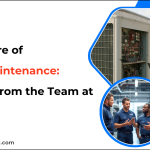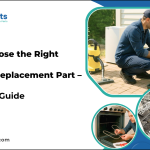In today’s evolving work landscape, change is constant. Whether it’s due to parental leave, a long vacation, sabbatical, medical leave, or shifting roles within an organization, employees often take time away from their jobs. While onboarding is a well-established process to help new hires get up to speed, many companies overlook the importance of reboarding an equally critical process designed for returning team members. When done right, reboarding ensures returning employees are well-informed, engaged, and ready to thrive again in their roles.
What is Reboarding?
Reentry is the framework organizations use to get former employees back into the flow of things with the company. As it is distinct from onboarding, which introduces a new member to the company’s culture and systems, reentry is aimed at bringing back in-house an old staff member who has been away for a while. Although the person may still know the basic elements of what the company does, they may still require help to adjust to new tools, team players, policies, or company direction which has changed while they were out.
Reboarding reports that brief leaves of absence create knowledge gaps. Upon return, it is often observed that employees who have left don’t feel included, are uncertain, or are unprepared, which in turn affects their confidence and performance. That is where a structured reboarding plan comes in.
Why Reboarding Matters
Organizations put in a great deal of time and resources into hiring and training staff. When that same staff leaves and returns after a while, a plan for their reentry is typically implemented, which is very much appreciated. Companies reboard returning employees to show they are valued, welcomed, and supported. It is viewed as a chance to build trust and loyalty, sending the message that the company is concerned not only with what employees do but also how they do it.
Also, reboarding enhances operational flow. It eliminates the expectation that employees will sort out issues on their own; instead, organizations provide clarity on what has changed and what is expected of returning staff at this time. This also removes guesswork and shortens the adjustment period.
Adapting to Change
Organizations are in a constant state of change, especially within hybrid and remote work settings. New communication tools, project management platforms, team structures, and policies often emerge rapidly. An employee back from a long leave may find the environment significantly transformed. Without the right onboarding or information at hand, this may cause confusion or frustration.
Reentry into the system is designed as a guided tour through the changes. It provides returning employees with the opportunity to see what has changed and to ask questions in a secure, formal setting. It also serves as a chance to reinforce key cultural elements and address issues that can improve team alignment and collaboration.
Creating a Reboarding Experience
Organizations don’t have to start from scratch with reboarding. It may follow a structure similar to a standard onboarding plan but is customized to best meet the needs of the returnees. Some companies opt for a welcome message from leadership or managers to set the stage. From there, a personalized reboarding plan may include a refresher on company tools, in-person check-ins, departmental updates, and a reintroduction to the team.
The key is to present relevant information. Not all returning employees require the same details. A tailored approach—considering the cause of absence, the employee’s role, and the duration of leave—makes the experience more meaningful.
Technology also plays a key role. Digital platforms can deliver real-time updates, organize training, or offer self-paced learning options. This saves managers and HR teams time while also ensuring a consistent experience for all employees.
Benefits for Both Employee and Organization
When reintegration is handled effectively, the result is a confident and connected employee who contributes from day one. Such employees are more likely to be engaged and less likely to suffer from burnout or isolation. This positive experience in turn leads to higher productivity, better team collaboration, and lower turnover rates.
For organizations, reboarding offers insight into how well employees are adjusting back into their roles. It is an opportunity to identify training gaps or breakdowns in communication. It also allows companies to collect feedback and use it to improve internal systems moving forward.
A Culture of Continuous Welcome
Reentry extends beyond a simple checklist. It is a component of building a people-centered company culture that supports employees through all stages of their journey. Whether it’s a first-time joiner or a returner from a leave, companies should aim to make every employee feel seen, supported, and set up for success.
In today’s ever-changing work environment, reboarding is a practical and human-centered solution. It reconnects employees with purpose, prepares them to perform, and reminds them why they chose to be part of the organization in the first place.
By focusing on reboarding, companies may see greater connection, smoother transitions, and a stronger, more resilient workforce.
Lynn Martelli is an editor at Readability. She received her MFA in Creative Writing from Antioch University and has worked as an editor for over 10 years. Lynn has edited a wide variety of books, including fiction, non-fiction, memoirs, and more. In her free time, Lynn enjoys reading, writing, and spending time with her family and friends.















